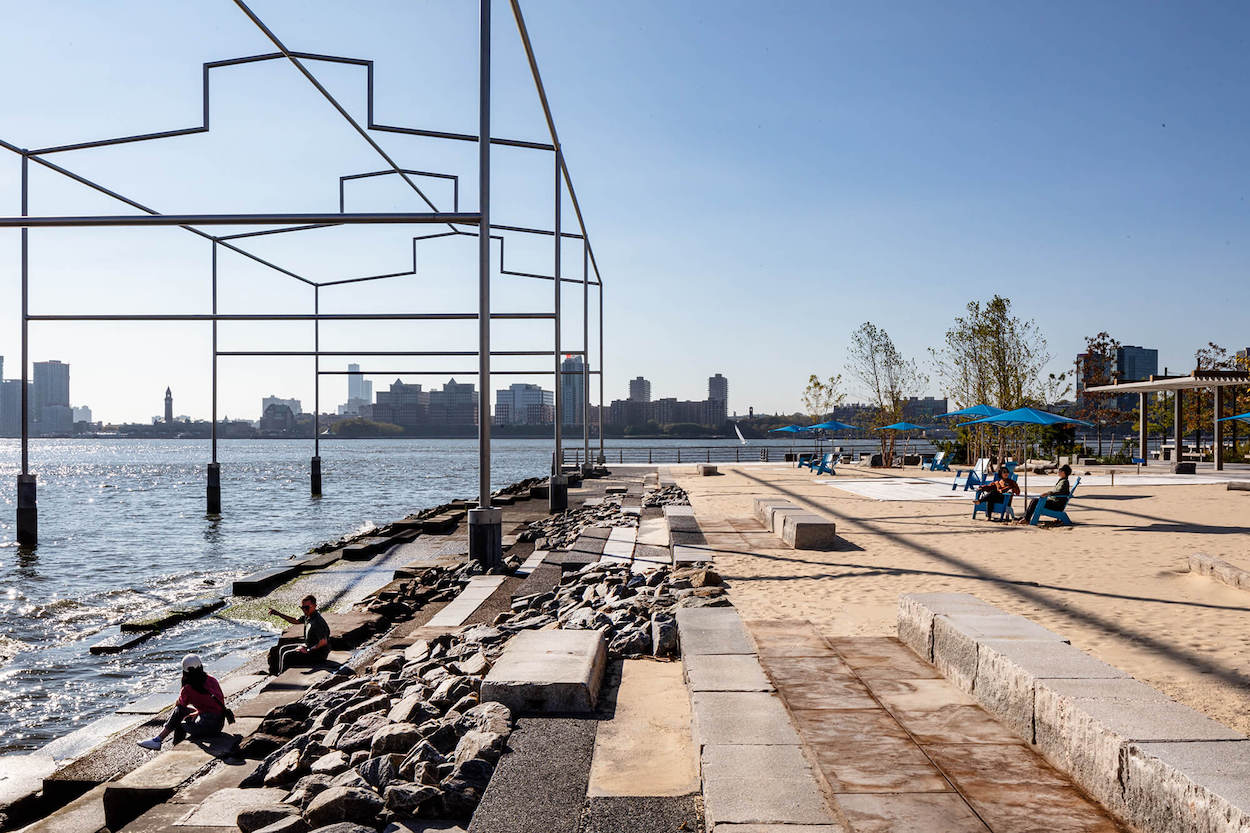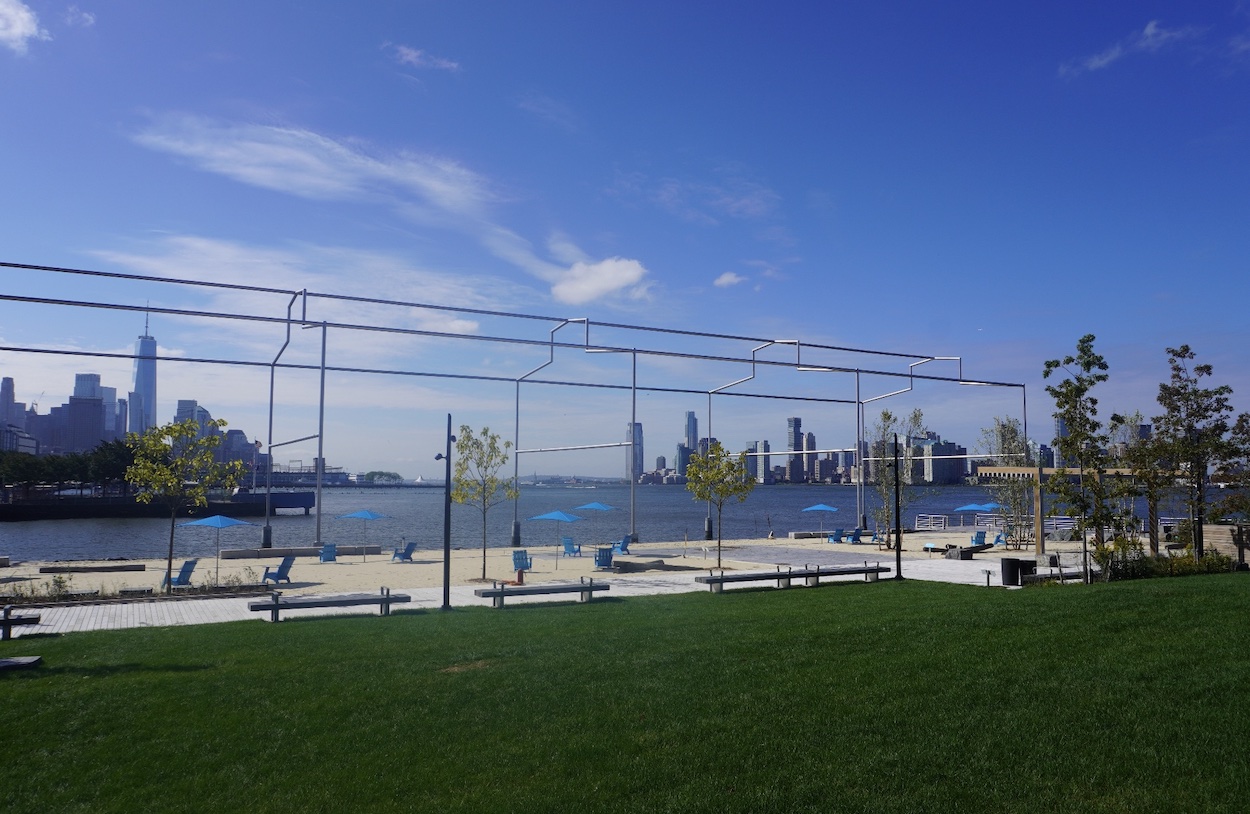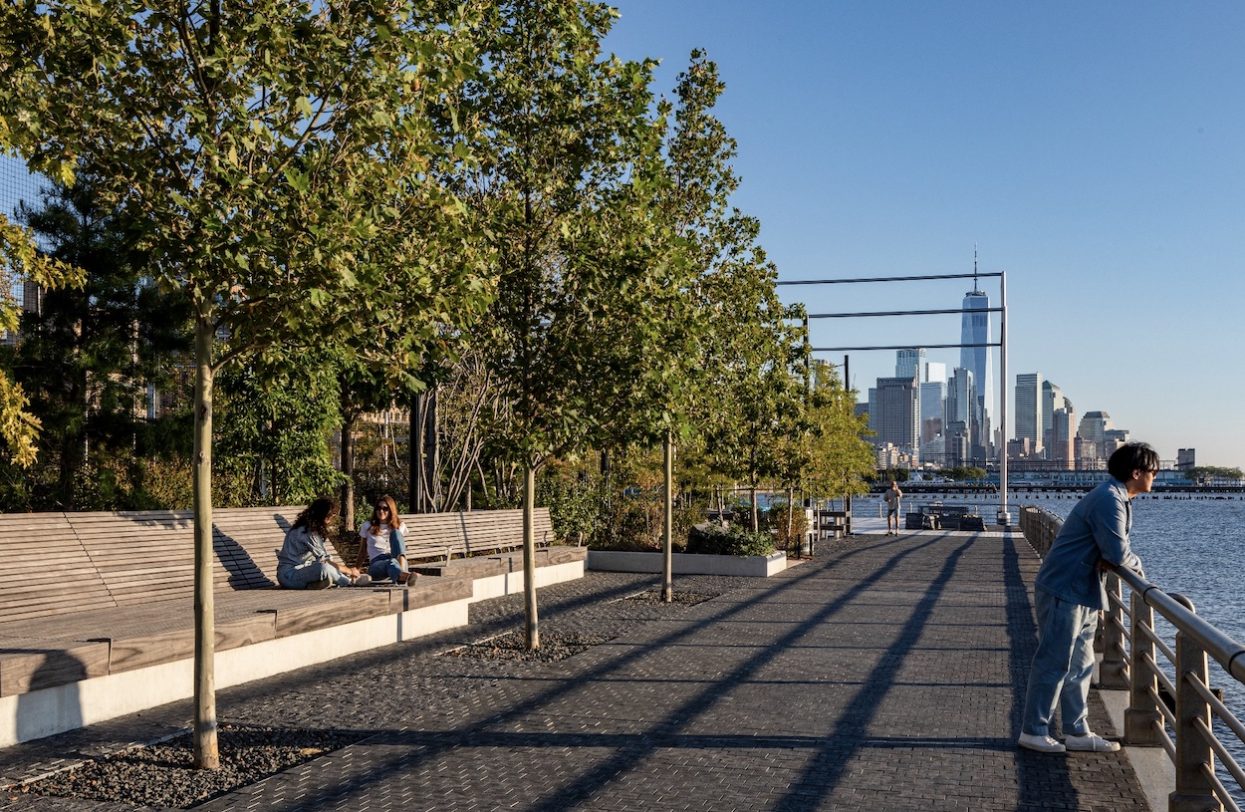Shorelines are often the centerpieces of major cities. Hong Kong’s gleaming supertalls tower over the South China Sea; the Seine and Thames wind past postcard-worthy scenes in Paris and London; parklands and pieds-à-terre line Chicago’s Gold Coast. The situation is drastically different in New York City, which has a staggering 578 miles of shores that, for decades, conjured images of derelict piers, gridlocked highways, and seedy impound lots. Though recent efforts have revitalized sections of the shore with lively parks and tourist traps, we still wouldn’t recommend swimming in the East River. New Yorkers craving a beach day need to schlep upwards of an hour to Coney Island or Far Rockaway.
Until this month. Located in Hudson River Park across from the Whitney Museum is the newly completed Gansevoort Peninsula, a fixture of the four-mile-long Hudson River Park that’s being touted as Manhattan’s first public beach, complete with picnic tables and Adirondack chairs. Granted, the sandy strip only comprises a small portion of the “green oasis” designed by Field Operations, the powerhouse landscape firm behind game-changing urban green spaces like the nearby High Line, Miami’s Underline, and San Francisco’s Presidio Tunnel Tops.
The firm packed a large sports field, boardwalk, seating lawn, and kayak launch point on the square pier—a step up from its past life as the site of a Department of Sanitation building. “Converting this former Sanitation facility into the sparkling public open space it is today has been a decades-long endeavor,” Noreen Doyle, the president and CEO of Hudson River Park, said in a statement. “Gansevoort also connects communities to their Hudson River, completing a gap in the Park’s four-mile footprint, and making it infinitely more pleasurable to travel between our surrounding west side neighborhoods.” Of course, the Hudson River still isn’t sanitary enough for swimming, which is strictly off-limits; Gansevoort Peninsula is better suited for sunbathers. There also won’t be restrooms until a new building by nARCHITECTS wraps up soon.
Until then, visitors can sit for an art history lesson without coughing up $30 for admission to the nearby Whitney. The institution and Hudson River Park Trust donated Day’s End, a permanent steel skeleton of a building by David Hammons, that soars over the pier’s southern reaches. He envisioned it as an homage to his late contemporary, the conceptualist Gordon Matta-Clark, who in 1975 excised a giant crescent from the facade of its predecessor, a warehouse, as a protest against the rapacious urban renewal that was displacing his artist community in Lower Manhattan.



